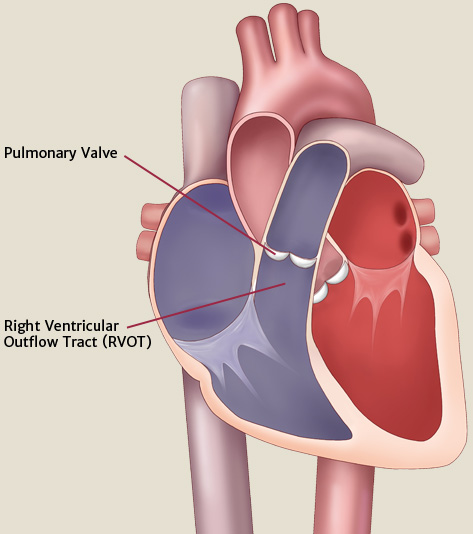Want To Stay Informed About the Latest Pulmonary Therapies?
Want To Stay Informed About the
Latest Pulmonary Therapies?
Congenital heart disease (CHD) is the most common birth defect in the United States, affecting about 40,000 children per year.
CHD is when the heart or blood vessels do not develop normally and may manifest in a variety of different ways. Some CHDs might not cause any issues at all, however babies with critical CHD may need surgery or other procedures in the first year of life. Some CHDs may require several surgeries and treatments throughout a person's lifetime.
Your heart is the primary organ for your circulatory system and it is designed to pump blood throughout your body. For people born with CHD, their heart does not function normally, and it can affect their overall health and quality of life.

The pulmonary valve (sometimes referred to as the pulmonic valve) lies between the right ventricle and the pulmonary artery. The valve acts as a one-way door, so blood can flow forward through the heart easily when it opens, and then when it closes tightly, blood does not flow backwards. It controls blood flow from the right lower chamber (right ventricle) to the pulmonary artery and sends blood to the lungs to pick up oxygen.
The Right Ventricular Outflow Tract, also known as the RVOT, includes the area underneath the pulmonary valve, the pulmonary valve itself, and a portion of the main pulmonary artery. The main function of the RVOT is to allow blood to flow from the right ventricle into the pulmonary valve, and to the pulmonary artery, then out to the lungs, where it picks up oxygen to deliver back to your body.
Approximately 20% of people with CHD have specific heart defects that involve the pulmonary valve or the area around the valve. While not all-inclusive, this list highlights the defects that most commonly affect the pulmonary valve or RVOT:
Tetralogy of Fallot, also known as ToF, is a rare condition caused by a combination of four specific heart defects that are present at birth. It can cause a bluish color to the skin, and is a common form of CHD that causes poor circulation of the blood. It accounts for approximately 10% of all congenital heart disease patients.
The pulmonary valve is narrowed or obstructed, forcing the heart to work harder than normal.
A hole in the wall between the two lower chambers–or ventricles–of the heart.
The pulmonary valve doesn’t form correctly. Instead of opening and closing, a solid sheet of tissue forms so blood can’t travel by its normal route to pick up oxygen from the lungs.
The aorta is incorrectly connected to the right ventricle instead of to the left ventricle. Both the pulmonary artery and aorta come from the same pumping chamber.
The Ross Procedure is a surgical option for children and young adults with diseased aortic valves or aortic valve failure. In this procedure, the diseased aortic valve is removed, and the patient’s own pulmonary valve is substituted in its place.
If you were born with a congenital heart defect that affects your pulmonary valve or RVOT, you may have had open-heart surgery, or another procedure to repair your pulmonary valve or its nearby structures to help restore blood flow to the lungs. As you get older, your valve or RVOT may begin to fail. If they aren't working properly, then the heart must work harder. Over time, the extra work becomes burdensome for the heart.
When this happens, symptoms may begin to present themselves, and your doctor may recommend that your pulmonary valve be replaced. Replacing your pulmonary valve will help maintain the proper function of the heart and ensure your continued well-being.

Difficulty breathing or fatigue (especially during exercise)

Chest pain, such as squeezing, pressure or tightness

Sensation of rapid or irregular heartbeat (palpitations)

Swelling of the legs or feet

Dizziness or fainting

Too weak for normal activities

Fever caused by infection of prosthetic valve

Bluish discoloration of the nails and lips (cyanosis)
Talk to your doctor if you experience any of these symptoms.

Want To Stay Informed About the Latest Pulmonary Therapies?
Want To Stay Informed About the
Latest Pulmonary Therapies?